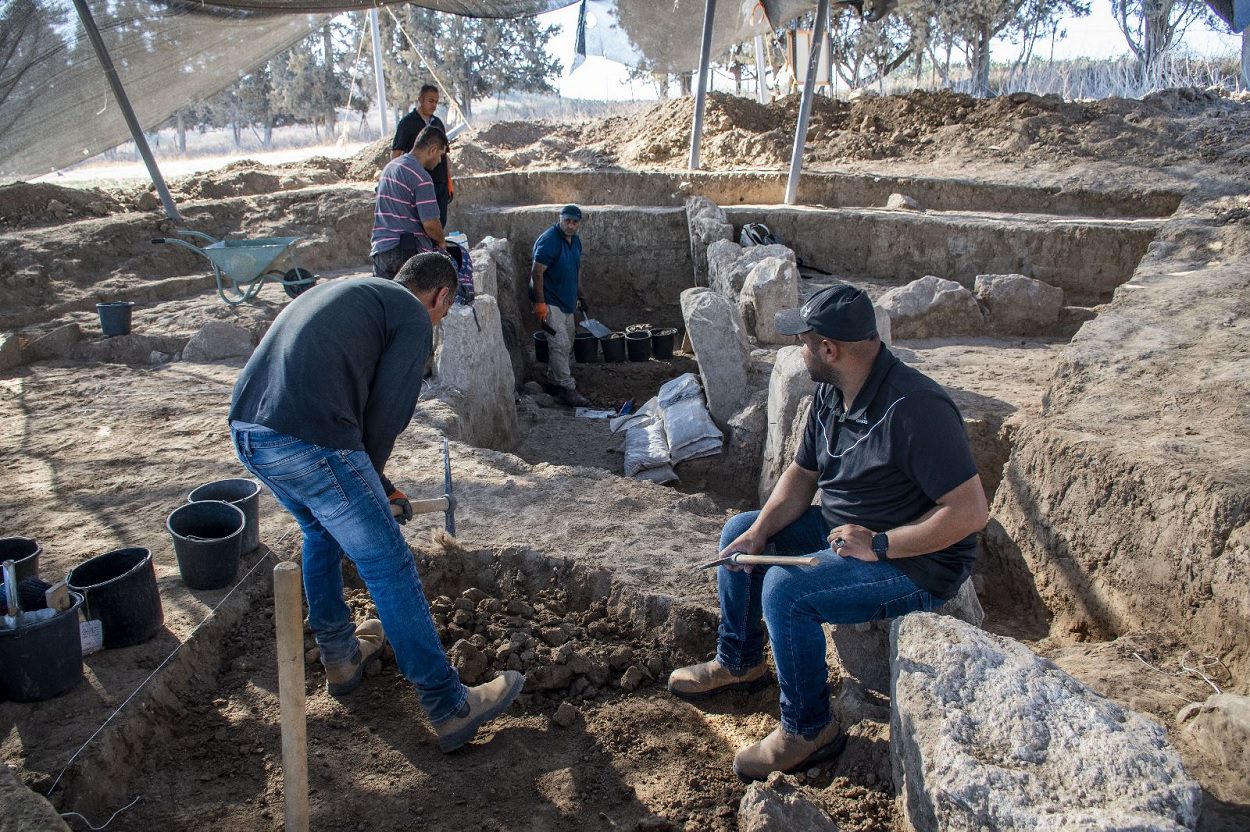Archaeologists from the Israel Antiquities Authority (IAA) have discovered a 5,500-year-old gate at the multi-period archaeological site of Tell Erani in the Southern District of Israel.
Tell Erani, also known as ʻIrâq el-Menshiyeh, was first occupied in the Chalcolithic period, but the majority of archaeological remains date from the Bronze Age and early Iron Age.
The site was first documented by Claude Reignier Conder and Herbert Kitchener in their 1872–1877 survey for the Palestine Exploration Fund, revealing evidence of people also inhabiting the site from the Hellenistic, Byzantine, and Mamluk periods.
Previous excavations by the Jagiellonian University in Krakow, Poland indicate that the most ancient artefacts at the site could potentially trace back to around 4,000 BC, aligning with the Amratian culture of Naqada I period.
A recent study by IAA archaeologists have discovered a gate and fortifications to defend the settlement that date from the Early Bronze IB around 3,300-years-ago.
The gate is preserved to a height of 1.5 metres and is comprised of a passageway built of large stones that leads into the ancient city. Flanking the gate are two towers, which along with the gate are attached to defensive walls that surrounded the city.
According to Emily Bischoff, Director of the excavation on behalf of the Israel Antiquities Authority: “This is the first time that such a large gate dating to the Early Bronze IB has been uncovered. To construct the gate and the fortification walls, stones had to be brought from a distance, mudbricks had to be manufactured and the fortification walls had to be constructed. This was not achieved by one or a few individuals. The fortification system is evidence of social organisation that represents the beginning of urbanisation.”
Header Image Credit : Emil Aladjem







